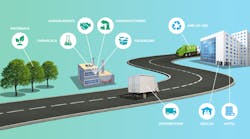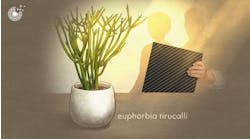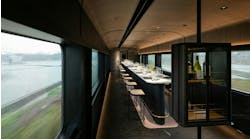With apologies to Tears for Fears: Everybody wants to save the world. And to the Rolling Stones: You can’t always get what you want; but if you try sometimes, you just might find … well, you probably know the rest.
Perhaps this scenario sounds familiar: You always try to choose sustainable materials, furniture and systems. Your clients encourage this, because they want to be able to brand their projects as sustainable, healthy spaces.
But the extra $25 or $50k for a LEED certification and plaque at the entrance just isn’t in the budget. And besides, if we’re being honest, few consumers understand or appreciate what those plaques actually mean.
So, you do your own research to find the healthiest, most sustainable materials. This means sifting through several, maybe dozens, of the 500-plus ecolabels that claim to assess environmental and human-health impacts. And you try to match your findings to the client’s goals in such a way that it adds up to a credible story for them to share with the users of their spaces.
And though you hate to admit it, at a certain point this might mean relying on unfamiliar data to justify checking the “sustainability” box for what you know is the right material for the application, whether or not the certification or label you’re relying on has any bearing on the project’s goals.
This doesn’t necessarily mean the material in question is a bad choice. It might just mean some suppliers haven’t invested the time or money on relevant certifications.
In the end, even after so many research hours, design teams may still not feel confident in they’ve found the best options for their clients.
Designer, Storyteller, Sage
If we reverse engineer this process, we find that it all comes back to the need for a “story”—an honest and meaningful sustainability narrative for your clients to share with their clients. It’s a powerful idea with a positive ROI.
Marriott, for instance, has found that sharing their sustainability story with guests increases loyalty and satisfaction by 150%. We also know that younger consumers will spend more with brands that reflect their sustainability and wellness values.
Building a climate-positive marketing story is now part of what clients expect from their A&D partners.
While these many certifications and ratings systems are essential, none tell a complete story. If anything, many of these regimens were originally conceived to help suppliers improve their own manufacturing processes. Interpreting this data to give designers some context for choosing one product over another requires a dedicated sustainability specialist. It’s a full-time position that you simply won’t find in every firm.
[Related: Must-Know Facts About Specifying Materials for Furniture, Fixtures and Millwork]
For designers this then raises the question: How can you possibly satisfy clients’ sustainability and marketing expectations, and still find time to design?
JoAnna Abrams has some ideas. Abrams is CEO of MindClick, a small firm made up of commercial designers, branding specialists and sustainability experts and auditors dedicated to streamlining healthy specification for designers in hospitality, retail, healthcare and other markets. They’ve created a framework for verifying the environmental and human health claims made by vendors and a very simple method of delivering this information to designers.
A Real-World Product Health Rating System
“There's demand from designers for reducing the noise around these 550 or so ecolabels related to climate and human health,” says Abrams. “So, we collaborated with Marriott to develop a more user-friendly alternative—our MindClick Sustainability Assessment Program [MSAP]—which is available to all of our design clients.”
In brief, this is how MSAP works using the model developed for Marriott:
- A vendor who is contracted with Marriott and has products specified in the brand’s standard design programs enrolls in the MSAP for Marriott International.
- MindClick sends that vendor a survey with detailed questions about their products and their impact on environmental and human health.
- The questions cover the climate and human impacts of the product—resource and materials use, manufacturing efficiencies, labor and social issues, packaging, shipping, benefits in use and end-of-use solutions.
- For every positive claim made by the vendor, documentation must be provided by the vendor to validate their claim.
- MindClick’s team of auditors reviews the responses and documentation and scores and rates each product with a “good, better, best” rating based on the assessment framework they developed in collaboration with the Hospitality Sustainable Purchasing Consortium.
- This score—a single number between 0 and 200—falls on a good-better-best continuum (“Starter,” “Achiever,” Leader” in the MindClick vernacular).
- The details of why a product merited a particular score is told in a one-page story in terms relevant to commercial design.
“This is a journey for vendors and for design specifiers,” say Abrams, “and there are very real rewards for making continuous progress. Marriott, for instance, has committed to sourcing 95% of products at the ‘Leader’ rating for their design standard programs by 2025.”
“It’s incredibly important that vendors are able to tell a good sustainability story,” says Lara Shortall. Shortall led the teams that created the Aloft, Four Points by Sheraton and Element brands for Starwood Hotels & Resorts (now part of Marriott). She’s now the director of A&D solutions for MindClick.
“When I was working with Starwood, I was very passionate about creating healthy environments. We invested a lot of time trying to make sure we were choosing healthy products,” Shortall recalls. “Even then we weren’t always sure because there’s just too much information out there, most of it confusing, or even contradictory.”
“The problem with expecting designers to do their own research is, none of these certifications or labels give them any way to compare products and come to a decision based on what they’re trying to achieve,” Abrams explains. “By giving them a simple good-better-best rating, and the story of why that rating was merited, we save them time and help them create healthier projects.”
The “story of why” that accompanies each material’s rating in this approach then becomes a chapter in the story you, as a designer, can then share with your client.
[Related Product: Camira Combats Marine Plastic Pollution with New Oceanic Fabric]
Healthy Products, Powerful Stories
Two material brand stories—one well established, one emerging—illustrate the power of a great story in terms of clearly communicating the environmental attributes of a product:
1. Interface Flooring
“I visited an Interface factory a few years ago,” says Shortall, “and I was so impressed that every person on the floor could tell the company story and did it with passion.” Talk about lasting impressions!
Interface needs no introduction, of course. They pioneered carpet buy-back and recycling, and successfully transformed their business to achieve net zero carbon emission. In so doing, they’ve managed to change an entire industry. More recently, their Net Effect program—facilitating the recycling of drifting ocean fishing nets into carpet tiles—resonates so powerfully that it is still fodder for cocktail conversation.
2. Decorative Composite Wood Panels
In the process of creating a CEU on how FSC forestry management practices resonate with the social values of Millennials and Zoomers, decorative composite panel producer Uniboard Canada discovered that their products have arguably the best sustainability story any building material can tell.
Made from wood fiber that was once considered waste, these particleboard- and MDF-based panels sequester more carbon than is released in their production. This makes them “climate positive”—a better way of saying “carbon negative”—a term now being promoted by IKEA and other major global brands.
It’s interesting to note that while IKEA plans to be climate positive by 2030, the composite panel industry is climate positive now. Add engineered surfaces that realistically replace fine veneers with much greater durability and FSC forestry management’s role in restoring the natural rhythms of healthy forest ecosystems, and we have a product story for which certifications and ecolabels can only tell part of the story.
As consumers demand better information about the impact of their choices on climate and human health, designers are searching for help filling that need. Forward-thinking companies are stepping up to provide the chapters designers need to help their clients tell these stories.
Read next: How Loll Designs Creates Furnishings from Milk Jugs
About the author: Material Intelligence founder Kenn Busch is a journalist and architectural photographer based in Madison, Wis. He specializes in creating educational content for architects and interior designers, and in-depth coverage of international design and materials fairs. For the last dozen years Kenn has been creating materials-focused Certified Education Unit articles and presentations for practicing architects and interior designers.



